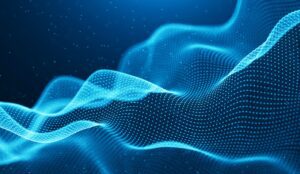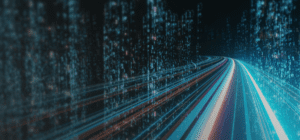Artificial intelligence has gone from being the subject of sci-fi movies to being a part of everyday life. But how many people truly understand the inspiration behind and the backbone of this technology? Modern AI and machine learning (ML) algorithms are built on the concept of neural networks and inspired by the way the human brain works. This article explores how closely neural networks mimic the brain and what that means for AI users.
What Are Neural Networks?
Neural networks are machine learning models programmed to mimic processes that happen in human and animal brains. In human brains, nerve cells work together to transport messages all over the body. These nerve cells are called neurons.
Natural or biological neurons constantly receive information from the environment and from other neurons. They process the information and transmit it to other neurons, eventually recognizing patterns and forming conclusions. Based on these conclusions, the neurons then transmit signals to other parts of the body, controlling every single process from breathing to eating and thinking.
Likewise, machine learning’s neural networks consist of complex networks of processors that assess and categorize complicated problems. These networks are one type of deep learning technology that is changing the way we live and work.
Examining the Structure of Neural Networks
Neural networks are made up of numerous individual nodes or intersections. Each node has three different types of layers or tiers, including an input layer, several hidden layers, and an output layer. The nodes in each layer are densely connected, leading to a complex structure.
A simple way of picturing these layers is to imagine the input layer as similar to the human optic nerve. The nodes in this layer receive raw input information from their environment. For humans, that could be equivalent to seeing a new location for the first time. In artificial intelligence or ML neural networks, the input layer describes the point where the network receives raw data.
As the data passes through the first hidden tier, it is processed. The processed data then passes to the next layer and the next until it reaches the output layer. For example, if the input is a question, the output would be the answer. Think of the hidden layers as the places where the work happens.
This is where the algorithm considers all aspects of the problem, where additional information is added, and where the consequences of potential answers are modeled. Remember that during this process, data not only travels between layers. Instead, it also moves between the individual nodes in the layers. These patterns of information transmission are only rivaled by the human brain.
Types of Neural Networks
Scientists distinguish between three main types of neural networks:
- Feedforward networks
- Convolutional neural networks
- Recurrent neural networks
Feedforward neural networks are the most commonly used form of neural network. In these networks, information moves from input to output. Convolutional neural networks are based on feedforward neural networks but also harness principles derived from linear algebra. They are often used for image recognition.
Recurrent neural networks have feedback loops and are generally used to process so-called time-series data and predict future outcomes. Sales forecasting uses these networks, for example.
How Neural Networks Work and Learn
Neural network nodes receive and quantify data. To ‘judge’ the information a node receives, it assigns a ‘weight’ to each incoming connection. Think of this as distinguishing between a reliable and a questionable source. As a node receives input from each connection, it multiplies these numbers or weights and is left with one single number. If that number is above a threshold value, the outcome will be passed to the next layer. If it is below, the node will not fire a signal.
During the initial stages of the training process, weights and thresholds are assigned at random, and the system is fed vast quantities of training data. As the training proceeds, weights and thresholds change. They are being adapted until training data with matching labels delivers matching outputs.
If a node delivers incorrect results, it will gradually be assigned a lower weight in a process known as backpropagation. This allows the algorithm to learn from its errors.
Applications of the Neural Network Concept
Neural networks were essential in the development of image recognition. Since those early days of AI and ML, their usage has expanded to include natural language processing (NLP) applications such as providing translations and generating language.
Chatbots have become one of the most widely spread applications of neural networks. Companies across all industry sectors have started using chatbots as the first line of customer service, allowing them to increase productivity in human employees. Analyzing the behavior of social media users and subsequent content development is another growth area of neural networks.
In short, if a process benefits from automation, neural networks can improve and streamline it.
Challenges and Limitations
A neural network is only as good as its training. A network trained with low-quality or limited amounts of data may deliver incorrect results. In addition, neural networks continue to suffer from a general lack of trust in the outcomes they deliver because of limited understanding as to how that conclusion has been reached.
Future Trends
The concept of neural networks dates back to the 1940s when two American mathematicians built a system that aimed to approximate the function of the human brain. However, it was not until a little more than a decade ago that computing power and the availability of vast quantities of data helped the technology take a noticeable step forward.
As interest in AI and ML-based applications grows, neural networks are likely to become more powerful and more widely understood and accepted.
Conclusion
In machine learning, neural networks mimic the processes of the human brain by analyzing data through a series of intricately interconnected nodes. Already widely used in image recognition and other applications, neural networks are likely to grow in popularity, especially as results become more reliable.








